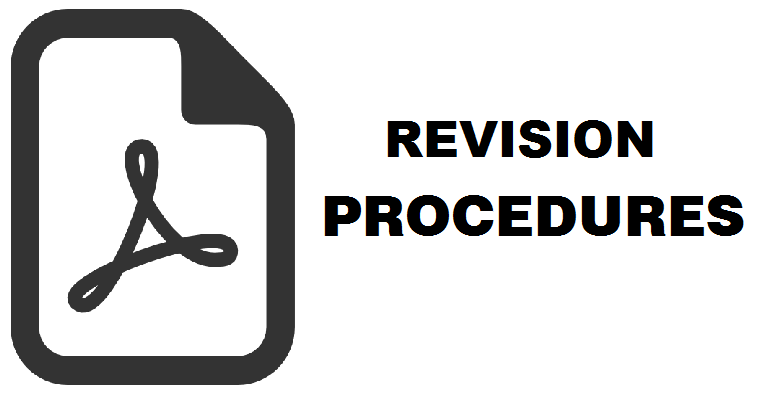Analisis Laju Sedimen DAS Serayu Hulu dengan Menggunakan Model SWAT
Nugroho Christanto(1*), Muhammad Anggri Setiawan(2), Afid Nurkholis(3), Saidah Istiqomah(4), Junun Sartohadi(5), M Pramono Hadi(6)
(1) Departement Geografi Lingkungan, Fakultas Geografi, Universitas Gadjah Mada
(2) Departement Geografi Lingkungan, Fakultas Geografi, Universitas Gadjah Mada
(3) Departement Geografi Lingkungan, Fakultas Geografi, Universitas Gadjah Mada
(4) Departement Geografi Lingkungan, Fakultas Geografi, Universitas Gadjah Mada
(5) Fakultas Pertanian, Universitas Gadjah Mada
(6) Departement Geografi Lingkungan, Fakultas Geografi, Universitas Gadjah Mada
(*) Corresponding Author
Abstract
Wilayah DAS Serayu Hulu merupakan DAS prioritas yang memerlukan langkah pengelolaan yang komprehensif. Aplikasi model Soil and Water Assessment Tool (SWAT) dapat digunakan sebagai media untuk perencanaan konservasi ataupun evaluasi respon DAS (debit aliran permukaan, sedimen dan pencemaran sungai). Tujuan utama dari penelitian ini adalah menjalankan model SWAT di DAS Serayu Hulu untuk mengetahui laju sedimen di wilayah ini. Pemodelan SWAT membutuhkan sejumlah input parameter berupa relief, tanah, tutupan lahan dan pengelolaan lahan. Pedogeomorfologi digunakan sebagai batas satuan tanah karena tidak tersedianya peta tanah di wilayah penelitian. Hasil Penerapan model SWAT di DAS Serayu Hulu menghasilkan nilai yang cukup memuaskan, hal ini ditunjukkan nilai R2 mencapai 0,94. Hasil pemodelan SWAT dengan menggunakan data selama 10 tahun (2004-2013) menunjukkan bahwa DAS Serayu Hulu memiliki rerata hasil sedimen sebesar 1.926.900 ton/tahun. Sub DAS 8,9 11, 17, 18, dan 19 merupakan penghasil sedimen tertinggi di DAS Serayu Hulu dengan hasil sedimen 43.931– 121.434 ton/ha/tahun.
Keywords
Full Text:
PDFReferences
Arnold, J. G., Kiniry, J. R., Srinivasan, R., Williams, J. R., Haney, E. B., & Neitsch, S. L. (2012). Soil and Water Assessment Tool: Input/Output Files. Retrieved from http://swat.tamu.edu/media/69296/SWAT-IO-Documentation-2012.pdf
Asdak, C. (2010). Hidrologi dan Pengelolaan Daerah Aliran Air Sungai: Edisi Revisi Kelima. Yogyakarta: Gadjah Mada University Press.
Briak, H., Moussadek, R., Aboumaria, K., & Mrabet, R. (2016). Assessing sediment yield in Kalaya gauged watershed (Northern Morocco) using GIS and SWAT model. International Soil and Water Conservation Research, 4(3), 177–185. http://doi.org/10.1016/j.iswcr.2016.08.002
Christanto, N., Hadmoko, D. S., Westen, C. J., Lavigne, F., Sartohadi, J., & Setiawan, M. A. (2009). Characteristic and Behavior of Rainfall Induced Landslides in Java Island, Indonesia : an Overview. EGU General Assembly 2009, Held 19-24 April, 2009 in Vienna, Austria http://meetings.copernicus.org/egu2009, p.4069, 11, 4069. Retrieved from http://adsabs.harvard.edu/abs/2009EGUGA..11.4069C
Christanto, N., Sartohadi, J., Setiawan, M. A., Hadi, M. ., Jetten, V. G., & Shrestha, D. P. (2017). Investigating The Effect of Conservation Techniques on the Land Degradation of Tropical Catchment Prone to Landslide. Jurnal Geografi, UNNES, 14(2), 1–10.
Christanto, N., Shrestha, D. P., Jetten, V. G., & Setiawan, A. (2012). Modeling the effect of terraces on land degradation in tropical upland agricultural area. EGU General Assembly 2012, Held 22-27 April, 2012 in Vienna, Austria., p.1075, 14, 1075. Retrieved from http://adsabs.harvard.edu/abs/2012EGUGA..14.1075C
dos R. Pereira, D., Martinez, M. A., Pruski, F. F., & da Silva, D. D. (2016). Hydrological simulation in a basin of typical tropical climate and soil using the SWAT model part I: Calibration and validation tests. Journal of Hydrology: Regional Studies, 7, 14–37. http://doi.org/10.1016/j.ejrh.2016.05.002
Ferijal, T. (2013). Aplikasi Model SWAT Untuk Mensimulasikan Debit Sub DAS Krueng Meulesong Menggunakan Data Klimatologi Aktual Dan Data Klimatologi Hasil Perkiraan. Rona Teknik Pertanian, 6(1), 398–404.
Lin, B., Chen, X., Yao, H., Chen, Y., Liu, M., Gao, L., & James, A. (2015). Analyses of landuse change impacts on catchment runoff using different time indicators based on SWAT model. Ecological Indicators, 58, 55–63. http://doi.org/10.1016/j.ecolind.2015.05.031
Liu, R., Wang, Q., Xu, F., Men, C., & Guo, L. (2017). Impacts of manure application on SWAT model outputs in the Xiangxi River watershed. Journal of Hydrology, 555, 479–488. http://doi.org/10.1016/j.jhydrol.2017.10.044
Neitsch, S. L., Arnold, J. G., Kiniry, J. R., & Williams, J. R. (2011). Soil and Water Assessment Tool Theoretical Documentation Version 2009 Texas Water Resources Institute. Retrieved from http://swat.tamu.edu/media/99192/swat2009-theory.pdf
Patil, A., & Ramsankaran, R. (2017). Improving streamflow simulations and forecasting performance of SWAT model by assimilating remotely sensed soil moisture observations. Journal of Hydrology, 555, 683–696. http://doi.org/10.1016/j.jhydrol.2017.10.058
Peraturan Pemerintah RI No. 37. (2012). Peraturan Pemerintah Republik Indonesia Nomor 37 Tahun 2012 Tentang Pengelolaan Daerah Aliran Sungai.
Polanco, E. I., Fleifle, A., Ludwig, R., & Disse, M. (2017). Improving SWAT model performance in the Upper Blue Nile River Basin using meteorological data integration and catchment scaling. Hydrology and Earth System Sciences Discussions, 1–28. http://doi.org/10.5194/hess-2016-664
Pyo, J., Pachepsky, Y. A., Kim, M., Baek, S., Lee, H., Cha, Y., … Cho, K. H. (2017). Simulating seasonal variability of phytoplankton in stream water using the modified SWAT model. Environmental Modelling and Software. http://doi.org/10.1016/j.envsoft.2017.11.005
Rodriguez-Lloveras, X., Bussi, G., Francés, F., Rodriguez-Caballero, E., Solé-Benet, A., Calle, M., & Benito, G. (2015). Patterns of runoff and sediment production in response to land-use changes in an ungauged Mediterranean catchment. Journal of Hydrology, 531, 1054–1066. http://doi.org/10.1016/j.jhydrol.2015.11.014
Senent-Aparicio, J., Pérez-Sánchez, J., Carrillo-García, J., & Soto, J. (2017). Using SWAT and Fuzzy TOPSIS to Assess the Impact of Climate Change in the Headwaters of the Segura River Basin (SE Spain). Water, 9(3), 149. http://doi.org/10.3390/w9020149
Setiawan, M. A., Stoetter, J., Sartohadi, J., & Christanto, N. (2009). The Integrated Soil Erosion Risk Management Model of Central Java , Indonesia, 11.
Sun, L., Nistor, I., & Seidou, O. (2015). Streamflow data assimilation in SWAT model using Extended Kalman Filter. Journal of Hydrology, 531, 671–684. http://doi.org/10.1016/j.jhydrol.2015.10.060
Zhang, S., Fan, W., Li, Y., & Yi, Y. (2017). The influence of changes in land use and landscape patterns on soil erosion in a watershed. Science of The Total Environment, 574, 34–45. http://doi.org/10.1016/j.scitotenv.2016.09.024
Article Metrics
Refbacks
- There are currently no refbacks.
Copyright (c) 2018 Majalah Geografi Indonesia

This work is licensed under a Creative Commons Attribution-ShareAlike 4.0 International License.
Volume 35 No 2 the Year 2021 for Volume 39 No 1 the Year 2025
ISSN 0215-1790 (print) ISSN 2540-945X (online)








